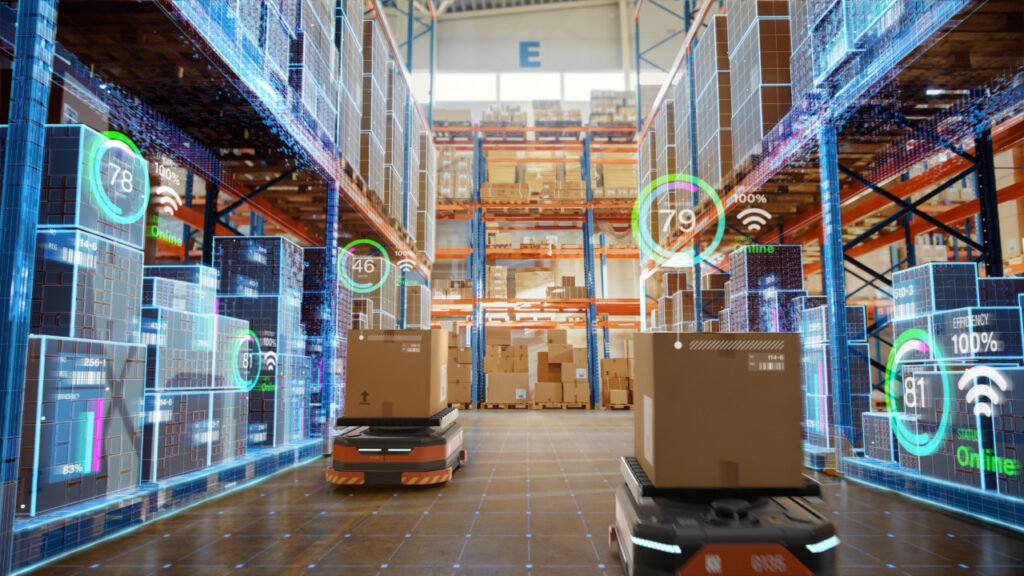By 2030, robots will be a significant facet of the warehousing industry. According to a survey published on Statista, 85% of manufacturing, wholesale, and import/export companies plan to adopt this technology within the next five years to optimize their warehousing operations.
The roster of vowed benefits is vast. From streamlined repetitive tasks to enhanced efficiency and accuracy, minimized human error, maximized use of space, and optimized resources, robots revolutionize warehouse operations.
In this article, we’ll discuss how.
Efficiency & Accuracy: Faster, Smarter, Better
What takes a human minutes or hours, robots do in no time. And with fewer mistakes, too.
Efficiency and accuracy are among the greatest strengths of warehouse robots. Picking, packing, and shipping — processes typically costly and prone to errors in most warehouses — are streamlined thanks to robots.
Primarily, this is because robots can operate continuously without the need for breaks, reducing downtime and increasing productivity. But it’s not just about speed. Robots are precise.
Equipped with sensors and advanced technology, they ensure that the correct items are picked without errors. Furthermore, automation helps minimize human errors in order fulfillment, so there is less time wasted on returning goods and sending apology emails to clients.
Safety: Robots Taking Over Risky Jobs
At the onset of robotics technology in warehouses, workers side-eyed their new colleagues. After all, robots were seen as a threat, taking over jobs and making humans redundant in the industry.
However, robots were warmly welcomed in one area of warehouse operations: dangerous tasks. Heavy lifting, operating forklifts, and working on high shelves can lead to accidents. Robots took over the risky jobs that used to be done by humans.
This shift is beneficial not only for workers but also for companies. With fewer accidents, legal issues, compensation claims, and medical notices, everyone in the warehouse is safer, happier, and able to focus on more creative and fulfilling tasks.
Financial Benefits: Saving Money in the Long Run
Integrating robotic technology solutions is quite an investment. These machines are not cheap but the savings are pretty obvious.
First, robots cut down labor costs — they don’t need overtime, sick days, or training. Second, robots make warehouses more productive. Orders get processed faster, customers are happier, and happy customers keep coming back.
Tech Innovations: Smarter Robots Every Day
The tech behind warehouse robots, including machine learning, artificial intelligence (AI), and the Internet of Things (IoT) is becoming better by the day.
As a result, robots in warehouses can learn, adapt, and communicate with other machines, opening up vast new possibilities for what they can achieve in the future.
For example, robots with AI-powered cameras can recognize items and check their condition. This helps ensure that faulty products are not sent to customers, reducing the chances of returns and other related issues. Even with this small example, it’s clear that robots can anticipate problems, and they have the potential to do even more on a larger scale.
Environmental Impact: Robots Go Green
Robots help warehouses go green. But how can they be greener compared to humans, you may wonder. Could it be like with the cows?
No. The thing with robots is that they’re super energy-efficient, using just enough power to get the job done. Some even have systems that recycle energy.
Robots also make better use of space. They can move in tighter areas and stack things higher, so warehouses can store more stuff without needing to expand. Less land used, less environmental impact.
The Human Element: Robots and People Together
Back to people worrying robots will take all the jobs; unfortunately, it’s true for some. But for the most part, robots and humans are better together.
Robots handle boring, heavy, or dangerous tasks, while humans can focus on more interesting and complex work. Instead of counting inventory, people can figure out better ways to organize the warehouse.
Also, working with robots helps people learn new skills, like programming or maintaining machines. This makes workers more valuable and prepared for a tech-filled future.
What’s Next?
As robotics keeps improving, the possibilities are endless. Imagine warehouses where robots fix themselves or predict what’s needed before anyone asks.
One thing is for sure: robots are here to stay. They’re making warehouses faster, safer, and more cost-effective, while also pushing tech-forward and helping the environment. And the best part? They’re showing us how amazing humans and machines can be together.
So, next time your package arrives super quick, think about those hard-working robots, transforming warehousing safer, greener, and more innovative.
Caroline is doing her graduation in IT from the University of South California but keens to work as a freelance blogger. She loves to write on the latest information about IoT, technology, and business. She has innovative ideas and shares her experience with her readers.






